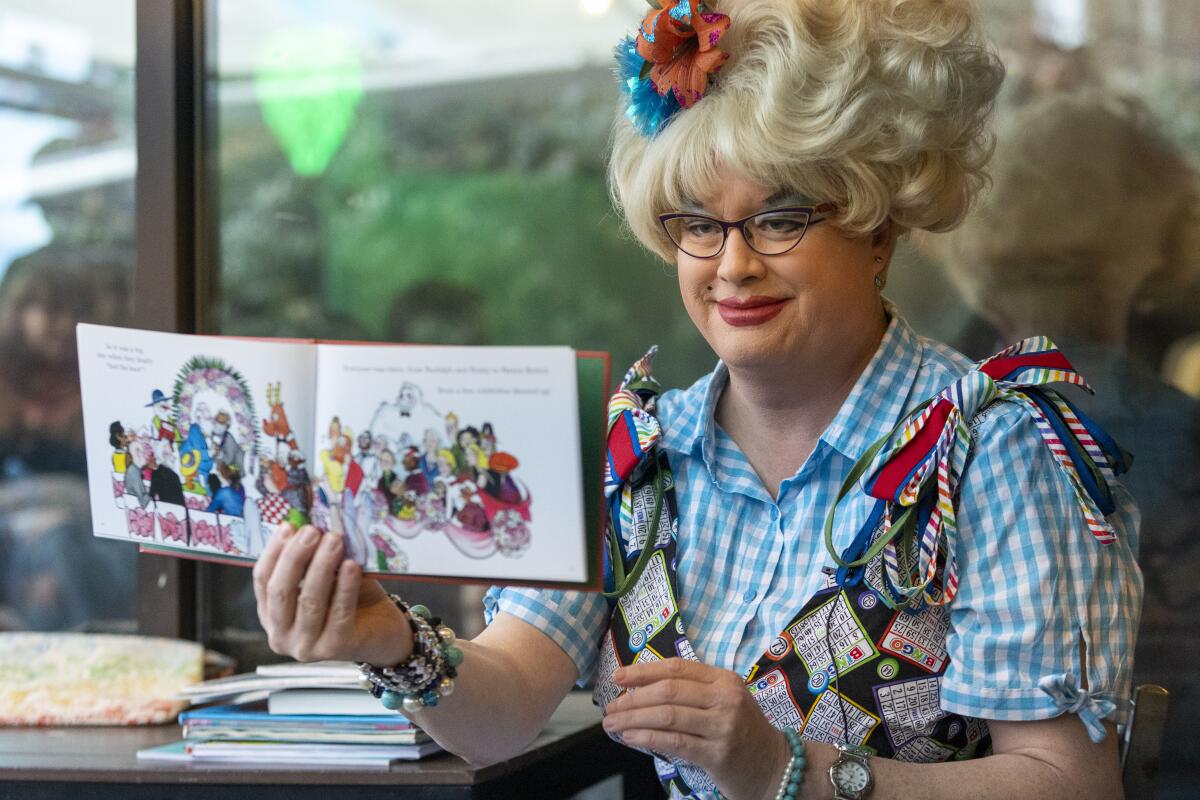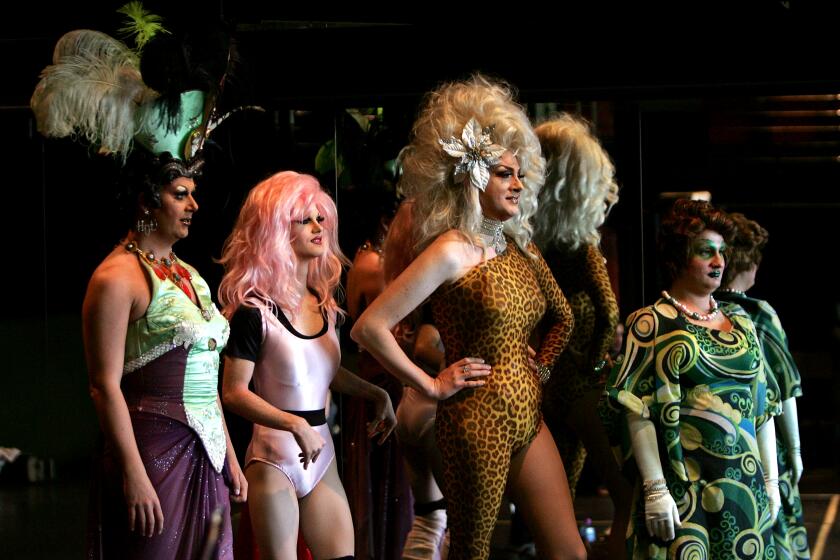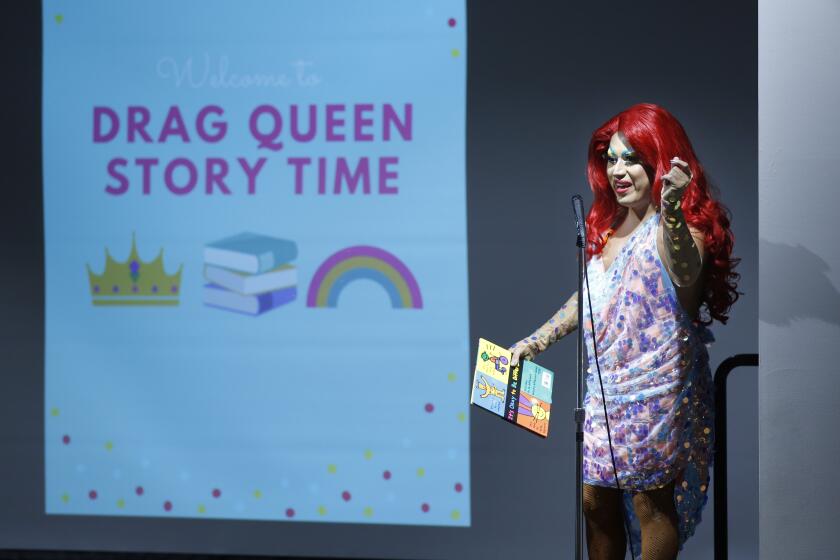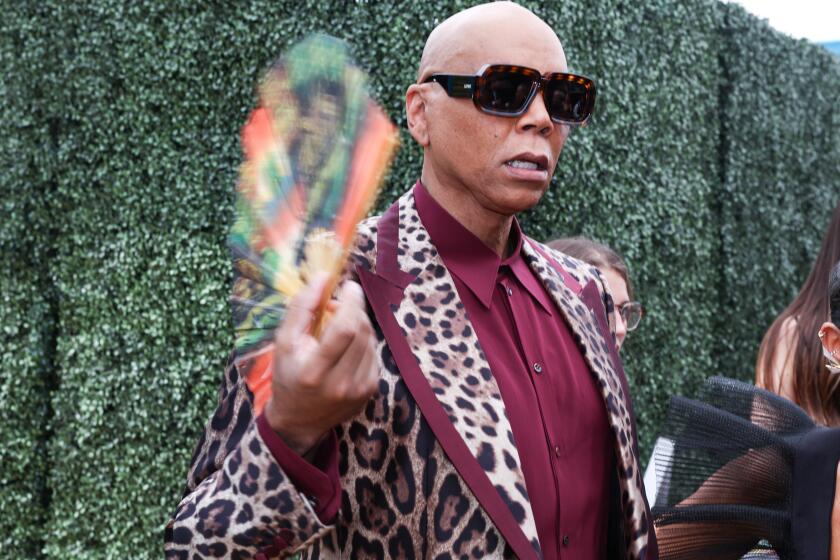Policing drag has a long history. There’s a reason politicians are at it again

- Share via
In a 2020 episode of “RuPaul’s Drag Race,” the contestants participated in a parody of a presidential candidate debate. Jaida Essence Hall handily won the challenge with her refrain, “Look over there!” as she pointed at nothing. This joke became both her catchphrase and a jab at distraction politics.
Recent efforts to criminalize drag might seem like distraction politics, but these laws are not mere misdirection. Political attacks on drag are part of the broader war on LGBTQ+ lives.
After whipping up moral panic about drag queen story hours at public libraries, conservative politicians have introduced dozens of specifically anti-drag bills during the first few months of 2023. Tennessee took the lead as the first state to sign one into law. As such legislation gains traction, it also emboldens transphobic and homophobic violence, along with overzealous policing.
Tucker Carlson was outraged that my stepdad took me, a 16-year-old, to see Miss Conception. The show was billed as family entertainment — and it was.
Political progress for LGBTQ+ people is relatively recent and only partial. But backlash has been swift and sweeping. As underrepresented people achieve legal enfranchisement and media representation, through TV series like “Drag Race” and “We’re Here,” they also become increasingly targeted by street violence and by political efforts to repeal protections in reaction to this exposure. This is what scholars call “the trap of visibility.”
But efforts to regulate gender expression and sexuality have long histories and are almost always contradictory in their logic.
Historically in theater and vaudeville, and even still in comedy, cross-dressing in character has not indicated that the performer is LGBTQ+. For centuries, women were prohibited from performing onstage, so men necessarily played female roles. After that convention ended, when men continued to appear in dresses, they provoked astonishment or laughter from audiences.
Ironically, the 19th century popularity of onstage female impersonation for predominantly straight audiences coincided with the rise of laws policing citizens’ gendered dress off-stage. Such laws, often called masquerade laws, typically stipulated that people in public had to wear at least three items of clothing belonging to their sex as assigned at birth. These laws gave police leeway to harass and arrest gender-nonconforming people, whatever their identities.
Drag performers are more visible than ever after decades in the underground, but will recent protests, threats of violence and restrictive laws set them back?
What most people think of as drag emerged as a gay male nightclub staple in the 1960s, when LGBTQ+ public life became increasingly possible. Drag queens are essential for the same reason they are perceived as threatening to the status quo: They cut through pretenses and fraudulent norms with their incisive wit, through a queer art of insult called “reading.” Drag is many things, including drag kings and performers who undo gendered binaries. It spans the full range from family friendly to adult entertainment.
Recent political ploys recall previous attempts that baselessly alleged that LGBTQ+ adults were pedophiles who preyed upon youth. The most famous instances date from the late 1970s: the 1977 Save Our Children campaign in Florida and the 1978 Briggs Initiative in California, a failed proposition to ban gay and lesbian teachers.
The ACLU has tracked more than 400 anti-LGBTQ+ bills this legislative session. Most target trans people, especially youth. Many politicians pushing the current bills are so locked into heterosexual worldviews that when they see a drag queen performing femininity, they wrongly believe that drag’s goal is to incite sexual arousal. For gay audiences, that’s rarely the case. Lawmakers insinuate that drag is like sex work and want to zone drag venues like adult businesses, but minors are already prohibited from 21+ venues.
Conservative politicians also blur distinctions between drag and trans life. Trans performers participate in the scene but drag and transness are not one and the same.
We are witnessing a tidal shift as unprecedented numbers of young people reject gender norms and identify as nonbinary and trans at earlier ages than before. The reactionary efforts to prevent youth from self-defining do not come out of concern for their well-being. Indeed, given the disproportionately high rates of suicide among trans and queer youth, these vicious policies should be considered genocidal.
RuPaul, host of ‘RuPaul’s Drag Race,’ responded to anti-drag laws, urging Americans to vote and calling GOP efforts a ‘distraction technique.’
Despite rhetoric that these legal measures protect children from drag queens, most LGBTQ+ adults say that they were not groomed by drag queens or corrupted by seeing the few media representations that were available. Instead, they accepted their gender identity and sexuality in spite of pervasive societal pressures to be gender-normative and straight.
If drag “corrupts” the youth, it is by showing that other selves, genders and perspectives are possible. Watching drag cannot make people trans or queer. But it might make youth feel seen, and it might save lives.
Lucas Hilderbrand is chair of film and media studies at UC Irvine. He is the author of a book on the film “Paris is Burning” and the forthcoming book “The Bars Are Ours: Histories and Cultures of Gay Bars in America, 1960 and After.”
More to Read
A cure for the common opinion
Get thought-provoking perspectives with our weekly newsletter.
You may occasionally receive promotional content from the Los Angeles Times.












